By Ivana Damnjanovic
“The journey does not merely consist of the river or the road, but of a slow metamorphosis of the self.” — Claudio Magris, Danube
First Light in Trieste
I arrived in Trieste on a warm March afternoon. The train slowed to a stop, breathing out a long sigh, and I stepped onto the platform with my small suitcase and a nervous kind of excitement in my chest. It wasn’t my first solo trip, but something about this one felt different. Quieter, somehow. More personal.
The first thing I noticed was the light. Not the harsh kind that makes everything look sharp and exposed, but a softer kind, almost silvery, like it had been filtered through history. Even the shadows felt gentle. I didn’t rush to check Google Maps or pull out my itinerary. For once, I let myself just stand there, feeling the city instead of trying to figure it out.
Outside the station, Trieste began to unfold, carefully, like a story that had been waiting to be read. The streets weren’t chaotic. There were people, sure, and cars and noise, but nothing about it felt overwhelming. The city had an old soul, but it didn’t show off. It just let you notice things, one at a time.
The architecture was the first real clue that Trieste wasn’t like other Italian cities I’d visited. There was something Austro-Hungarian in the buildings: tall, elegant facades with wrought-iron balconies and pastel colors that had faded just enough to look timeless. Some streets looked straight out of Vienna. Others felt Mediterranean, with bright shutters and little balconies spilling over with potted plants.
As I walked in the direction of my hotel, I passed grand boulevards lined with Art Nouveau buildings, and quieter alleys where laundry swayed between windows. Some corners smelled like coffee. Others, like sea salt. The city didn’t hit me all at once. It crept in slowly, turning my head toward one detail after another. A crumbling stone fountain, a quiet bookstore tucked between two apartment blocks, the soft rhythm of Italian spoken with a slightly different accent.
Then, without really meaning to, I ended up at Piazza Unità d’Italia.
It took my breath away.
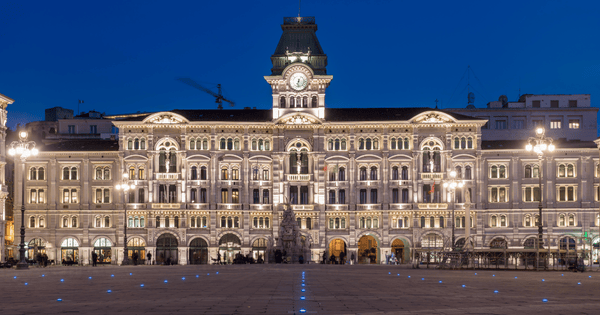
The square was enormous. It was open on three sides, with rows of ornate buildings facing the water like an audience waiting for the sea to perform. The fourth side was completely open, giving way to the horizon where sky met the ocean without interruption. I stood there for a few minutes without moving, just looking.
The architecture here was almost theatrical. The Palazzo del Municipio, with its pale stone and green-topped tower, looked like something out of a fairy tale. Each building around the square seemed designed not to impress, but to last: heavy stone, symmetrical lines, rows of tall windows. And yet nothing felt cold. Even the grandeur had softness to it.
The sea shimmered beyond the piazza. Not the turquoise, postcard-perfect kind, but a deeper blue, almost steel-colored, that made you want to stare into it for a while. It looked like it had stories to tell. Like it had seen people leave and arrive for centuries. In boats, in dreams, in silence.
I walked across the square, pulled toward the edge like a magnet. The air smelled of salt and something metallic, like old ships. I could hear the faint cries of gulls and the clinking of metal against metal from boats moored nearby.
Then I stepped out onto Molo Audace, the long stone pier that stretches into the water like a sentence unfinished. It felt like standing on the edge of something both literal and emotional.
The bora, Trieste’s famous wind, was gentle that day. I had read that it could be violent, knocking over bikes and sending hats flying. But this version of it was softer. More like a whisper than a scream. It played with the ends of my scarf and moved through my hair with the kind of touch that says you’ve arrived.
I closed my eyes and let it brush my face. I didn’t know then why that moment mattered, but it did. It felt like a welcome, but not just from the city. From something in myself I hadn’t heard from in a long time.
Meeting Lucia: Stories from a Small Shop
On the way to the hotel, I passed a little souvenir shop squeezed between a tobacco store and a bakery. It wasn’t flashy. Just ceramic boats, old postcards, hand-painted magnets in the window, but something about it made me want to stop.
Inside, the air smelled like dried lavender and old books. A woman behind the counter looked up and smiled.
“Buongiorno,” she said. “First time in Trieste?”
I nodded. “Just got here.”
“Then we have to make sure you leave with the right memory”, she said.
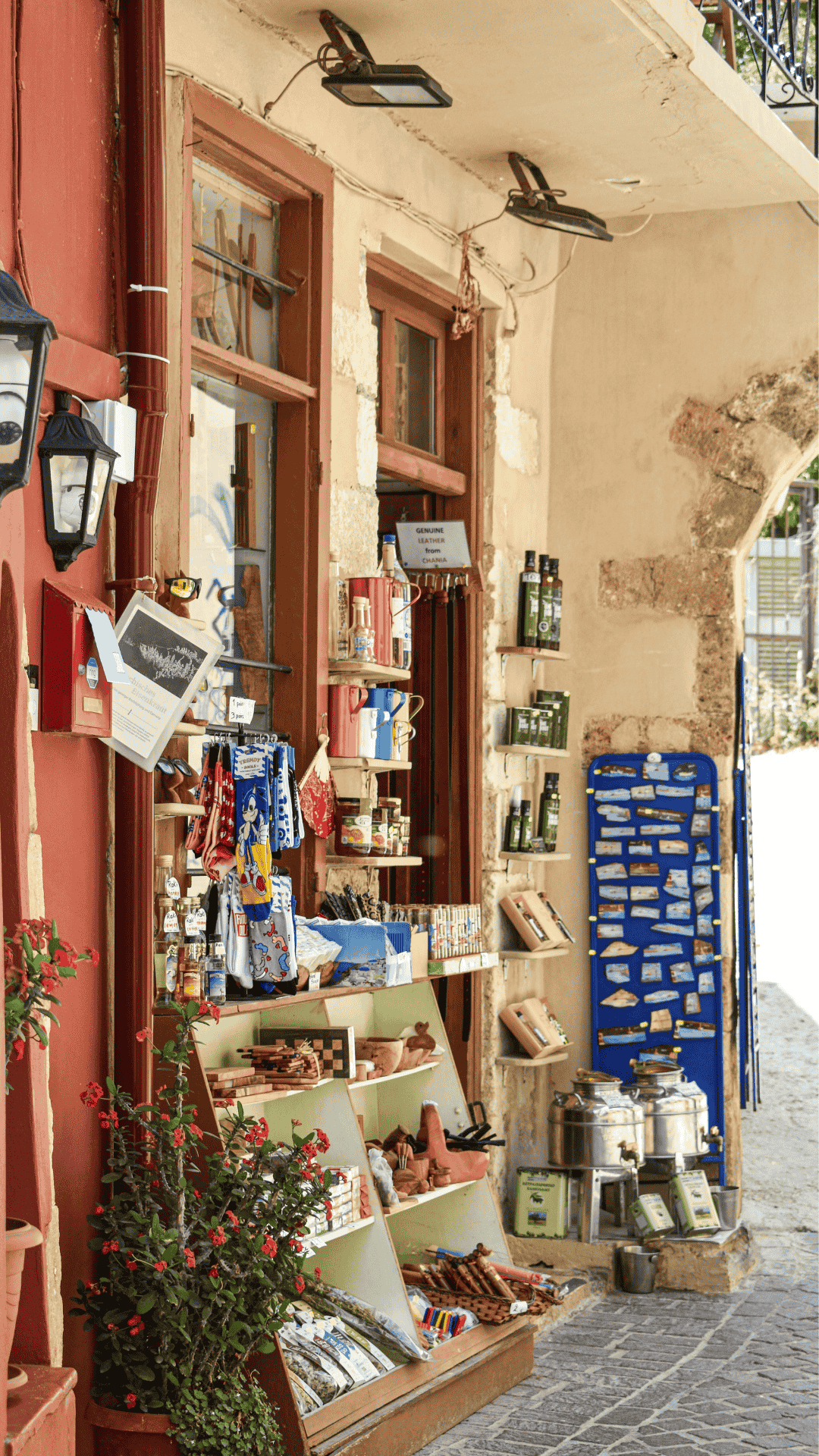
Her name was Lucia, and in ten minutes she managed to make me feel completely at home. She talked about the bora like it was a moody old friend – “capricciosa,” she called it – and told me how Trieste people argue about coffee like it’s a national sport.
When I asked where I could get some good local coffee to take home for a friend, her eyes lit up. She grabbed a pen and wrote something down.
“Torrefazione,” she said, handing me the note. “Tell Paolo that Lucia sent you. He’ll help you.”
Paolo’s Coffee: A Taste of Trieste
I found the shop just off a side street. Before I even saw the sign, I could smell it. Roasted beans, a hint of something sweet. Inside, burlap sacks leaned against the walls, and the air was warm and earthy.
A man in a coffee-stained apron looked up.
“Posso aiutarti?”
That was Paolo. I explained, in broken Italian, that I didn’t drink much coffee myself, but my friend did, and I wanted to bring back something really good.
He nodded like that made perfect sense.
“Okay,” he said, smiling. “Coffee isn’t just about taste. It’s about feeling. Your friend, calm or passionate?”
We both laughed, and he started handing me blends to smell. One was rich and nutty, another was bold and spicy. I picked one that reminded me of early mornings: warm, grounded, not too intense.
As he carefully wrapped the bag in brown paper, I thought about how the coffee felt like Trieste itself. A mix of flavors, sometimes bitter, sometimes sweet, always complex and full of surprises.
Ghosts of a Life Unlived
Later that day, I found myself walking past a school. It was just a simple yellow building with green shutters and metal gates, nothing fancy. But the students gathered in the courtyard caught my attention. They were laughing, shouting, and moving with that easy, careless energy only teenagers have.
For a moment, I stopped and watched. This might have been my school. If things had been different, if my family had moved here when I was a child, I might have been one of those students, rushing through these gates, complaining about homework, trading snacks with friends.
My family once seriously thought about moving to Trieste. There were plans, phone calls, apartment searches, all of it so real that I could almost touch it. But then life took a different path, and the move never happened. Trieste became a place in my imagination, a “what if” that lived quietly in the background of my life.
That “what if” has always been strange to me. It’s not sadness exactly, more like a gentle ache for a life that could have been, a life where I grew up speaking Italian fluently, where I knew the city’s rhythms from childhood.
But at the same time, I’ve never felt completely disconnected from Trieste. My background is Slavic, and I live in Vienna now. Both places, in their own ways, share parts of Trieste’s complex history and culture.
Trieste sits at the crossroads of many worlds – Latin, Slavic, Germanic – and I carry those influences with me. In Vienna, I walk streets that echo with the same Austro-Hungarian past. I hear languages that overlap with what I’ve heard in Trieste. In my family’s stories and traditions, I find shades of the Slavic side of the city.
It’s like Trieste has been with me all along, even when I wasn’t here.
That thought brought a quiet kind of peace. Maybe I don’t need to have lived in Trieste to belong to it. Maybe it’s already part of me because of where I come from, where I live, and who I am.
Standing outside that school, I felt connected to the city, to my past, and to a version of myself that was both imagined and real.
Sometimes, the life that almost was can be just as meaningful as the life that is.
Wandering Without a Map
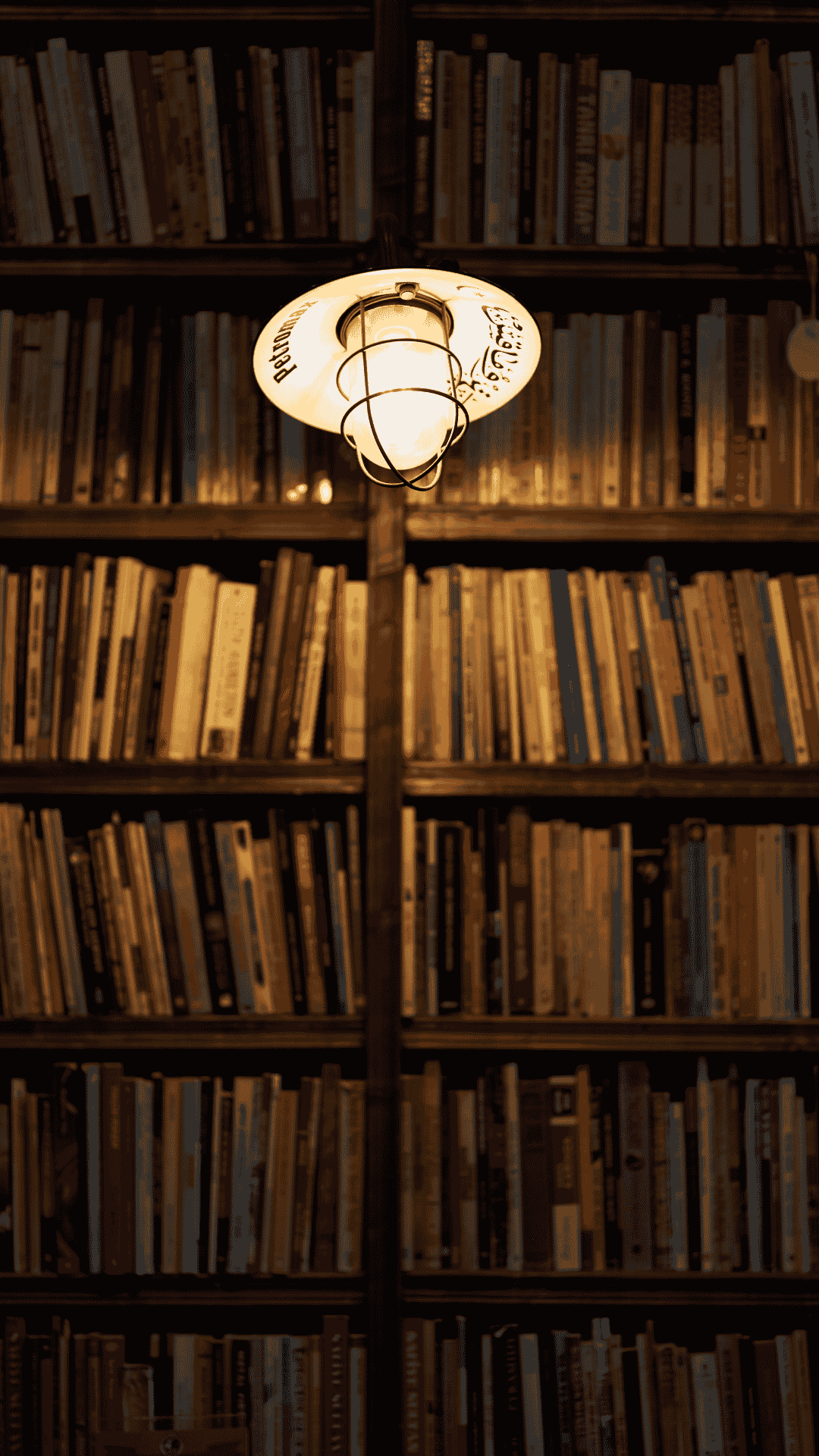
The next evening, I made a decision. I turned off my phone and left my map in my bag. I didn’t want to know where I was going. I wanted the city to lead me, not the other way around.
The streets of Trieste after dark felt different. They were quieter, softer, but still full of life.
Streetlights cast pools of warm yellow on the cobblestones. The air smelled of baked bread and something like rosemary from a nearby garden. The sound of footsteps echoed gently, sometimes interrupted by distant laughter or the soft ringing of a bicycle bell.
I walked without a destination, letting my feet choose the path. I found myself turning down narrow alleys that twisted and curved like questions. Buildings leaned in close, their walls textured with peeling paint and faded graffiti. I paused to look at windows glowing from the inside, glimpsing families eating dinner, couples talking quietly, old men playing cards.
Sometimes I stopped to listen. An old song drifted out from a radio. A dog barked somewhere behind a gate. The wind carried bits of conversations in Italian. They were words I couldn’t fully understand, but whose rhythms felt familiar and comforting.
I said simple phrases out loud when I passed people. “Buonasera,” “Scusi, dov’è la stazione?” “Grazie mille.” My voice was soft and unsure, but no one laughed or seemed impatient. People responded with kind smiles or helpful gestures. It felt like the city was giving me permission to try, to make mistakes, to be a beginner.
I found a small, dimly lit bookstore and peeked inside. The smell of old paper and ink made me pause. There were stacks of books in Italian, German, Slovenian, all languages of this place. I ran my fingers over the spines, feeling connected to the many stories held within those walls.
In another street, a café spilled warm light onto the pavement. The scent of fresh coffee made me stop and order a simple espresso, which I sipped slowly while watching passersby. The city felt alive, but also patient, like it was waiting for me to catch up.
Getting lost wasn’t frustrating or scary. It was a gift. It let me discover things I wouldn’t have seen if I’d stuck to a plan. The city unfolded like a secret map, and every wrong turn led me somewhere new.
More than that, wandering without a goal made me feel brave. I wasn’t hiding behind a screen or a guidebook. I was here, in the moment, open to whatever came next. For once, being lost didn’t mean being alone. It meant being present.
At Caffè San Marco: Quiet Inspiration
On my third morning in Trieste, I walked to Caffè San Marco, one of those places that shows up in guidebooks but still manages to feel real. I didn’t go there to check a box. I went because I wanted to slow down.
The café was beautiful in that quiet, old-fashioned way: wood-paneled walls, carved ceilings, worn leather chairs. People sat reading newspapers or sipping espresso without rushing. I ordered a cappuccino and sat by the window, notebook in hand, trying not to feel like I was performing some romantic idea of being a writer. But honestly, it did feel like a scene from a movie. The kind where nothing dramatic happens, but something changes anyway.
Before the trip, I’d read that James Joyce had lived in Trieste for years. He taught English at a local language school, struggled to pay rent, and worked on early drafts of Dubliners and Ulysses. I kept imagining him sitting here – maybe at the very table where I was – scribbling down notes, watching people pass by, trying to make sense of his life.
It surprised me that someone like Joyce had chosen Trieste (not Paris, not London) as his home for over a decade. But the more time I spent in the city, the more it made sense. There’s something about Trieste that invites thinking. Not the loud, ambitious kind, but the slow, layered kind, like thoughts that take their time to surface.
I didn’t write anything brilliant in that café. Just a few scattered lines about wind and water and how my coffee tasted slightly bitter but comforting. But for the first time in a while, I wasn’t writing to prove anything. I was just writing to remember.
That’s what this city seemed to offer: space to observe, to absorb. Not to impress. Just to be present.
I left Caffè San Marco without rushing, walking slower than usual, like I didn’t want to disturb whatever quiet magic the place had left in me.
Ruins and Layers: The Many Faces of Trieste
Later that afternoon, I found myself standing in front of an old Roman theater. It was partly buried into the side of a hill, its stone steps worn down by time. It sat quietly in the middle of the modern city, almost like it had been forgotten and rediscovered at the same time.
What struck me wasn’t just the age of it (though that alone was enough to stop me) but the fact that it was here at all. Somehow I hadn’t connected Trieste with Roman ruins. But the truth is, this city has always been more than just Italian. It has been many things over the centuries, and its identity is more complex than I’d understood before arriving.
Trieste started as a Roman settlement called Tergeste. Later, it became part of the Venetian Republic, then passed into Habsburg hands, eventually becoming one of the most important ports in the Austro-Hungarian Empire. Back then, it was a cosmopolitan city, full of merchants, sailors, writers, and diplomats speaking Italian, German, Slovenian, Croatian, Greek. You can still feel that blend today.
The architecture tells the story. Some streets feel like Vienna, with grand facades and ornate balconies. Others look and feel purely Italian with narrow alleys, laundry hanging from windows, and scooters buzzing past. Some neighborhoods feel Eastern European, with rougher edges and traces of past struggles.
And then there’s the sea, always reminding you that this was, and still is, a city shaped by arrival and departure.
In the early 20th century, Trieste was known for its literary scene, its politics, and its diversity. But the world wars changed everything. After World War I, it became Italian, but not without tension. After World War II, it was caught between East and West, tangled in Cold War politics. There was even a period when it was declared a Free Territory, jointly managed by the Allies and Yugoslavia. It’s strange to think a city could belong to no one, or to everyone, depending on the year.
Today, Trieste belongs to Italy, but it still doesn’t feel quite like anywhere else. It’s a city on the edge. On the edge of the country, of cultures, of languages. And yet it doesn’t seem confused by that. It feels comfortable with its mix. Like someone who has stopped trying to define themselves with a single label.
Standing there at the edge of the Roman theater, I realized that this city’s identity wasn’t about choosing one history over another. It was about holding all of them at once. Maybe that’s why I felt so at ease here. Because I didn’t need to choose one version of myself either. I could just be. Part curious tourist, part lost daughter, part quiet observer. And somehow, all those parts fit in Trieste.
From San Giusto Hill: A City in Panorama
The next morning, I decided to climb San Giusto Hill, the highest point in Trieste. The walk up was gentle but steady, winding through quiet streets lined with old houses, their walls covered in ivy and patches of sun-warmed stone. Each step brought me closer to a view I had seen only in pictures: the city spreading out below, wrapped around the bay like a soft blanket.
As I reached the top, the cathedral came into view. The Cathedral of San Giusto stood proudly with its weathered stone walls and tall bell tower, a silent guardian watching over the city for centuries. Its mosaics caught the sunlight, glittering faintly like forgotten treasures. The air here smelled different. It was a mix of sea salt, pine from nearby trees, and something ancient, like history itself.
From the hilltop, the panorama was breathtaking. The rooftops stretched out in a patchwork of red and terracotta, broken only by church spires and the narrow streets twisting through the city. Beyond, the Adriatic Sea spread wide and blue, its surface catching the light like scattered diamonds.
I stayed there for a long time, letting my eyes roam from the distant ships on the horizon to the small details close at hand: a cat perched on a stone wall, the flutter of a flag in the breeze, the faint sounds of voices carried upward from the city below.
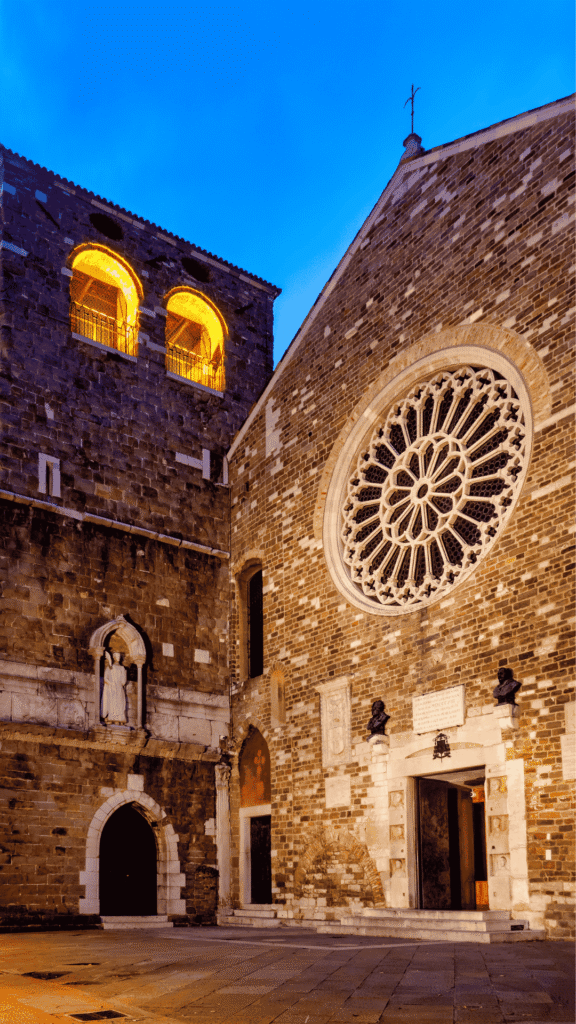
San Giusto Hill felt like the heart of Trieste, a place where past and present lived side by side.
Standing there, I sensed how many lives had passed through this city – Romans, Venetians, Austrians, Slovenians – each leaving their mark, each adding to the layers that made Trieste what it is today.
It was humbling and comforting all at once. I didn’t need words or stories to understand. The place itself told them, if you just stopped and listened.
Simple Comfort: A Night of Pizza and Warmth
That evening, I found a small pizzeria tucked down a quiet street. The place was cozy, with checkered tablecloths and walls covered in old black-and-white photos. It smelled like warm dough and melted cheese. Exactly what I needed after a long day of walking.
I ordered a margherita pizza, simple but perfect. While I waited, I watched the staff move around the kitchen with practiced ease, tossing dough and sliding pizzas into the wood-fired oven.
When my pizza arrived, it was golden and bubbling, with fresh basil and just the right amount of sauce. I took a bite, and the flavors were honest and comforting. Nothing fancy, just good food made with care.
As I was finishing, one of the waiters came over.
“Ti è piaciuta la pizza?” he asked with a friendly smile.
“Molto,” I said, returning the smile. “Delicious.”
He nodded, pleased. “Benissimo. You’re welcome anytime.”
It was a simple exchange, but it felt genuine. The kind you remember because it’s real, not rehearsed.
Sometimes, the best moments on a trip aren’t the grand adventures. They’re the quiet dinners where you feel at home, even for just one night.
Farewell: Carrying Trieste Within
On my last morning in Trieste, I woke early. The sky was soft and pale, the kind of light that feels like a gentle promise rather than a rush to start the day. I wanted to see the city one last time before I left, so I made my way back to the Molo Audace, the long stone pier that stretches out into the Adriatic.
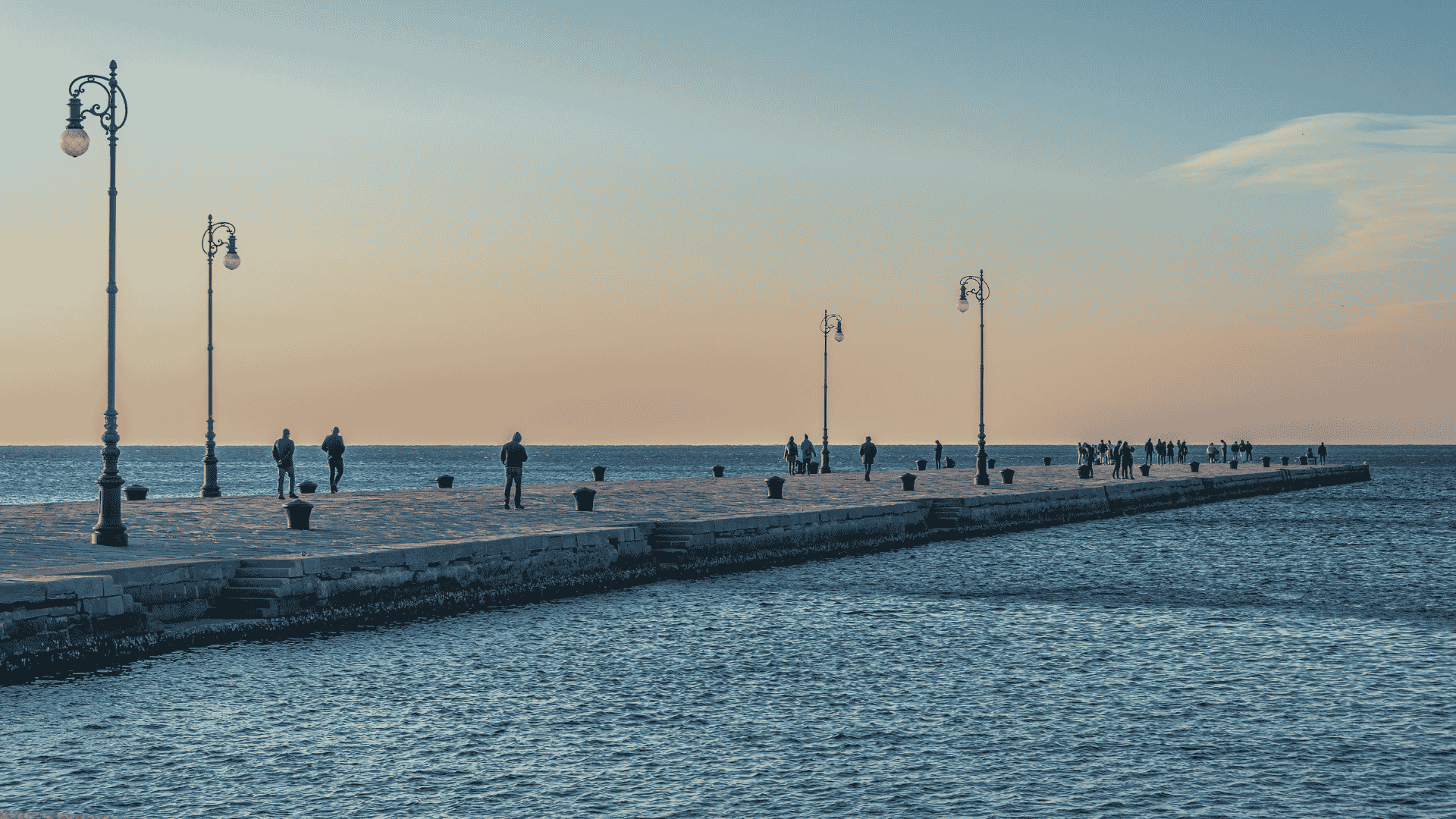
The air was cool and fresh, carrying the familiar scent of salt and seaweed. A few early risers strolled quietly, their footsteps soft on the cobblestones. The water was calm, reflecting the soft colors of the morning sky like a mirror. The famous bora wind, which I’d heard so much about, was just a light breeze today. Enough to rustle my hair and remind me I was still here, still part of this place for a little longer.
Standing at the edge of the pier, I looked back toward the city. The buildings of the Piazza Unità d’Italia caught the morning light, their facades glowing warmly. I could see the narrow streets winding through the old town, the green shutters of the school I had passed, and even the small coffee shop where I had found my gift.
It felt strange to say goodbye to a city I’d never lived in, a place that was both a part of my past and my present. I thought about the girl I might have been if my family had moved here and how different her life could have been. But more than that, I thought about who I was now, standing here in the quiet morning light, feeling both a part of Trieste and yet ready to leave it behind.
I rolled my suitcase slowly back through the piazza, past the empty tables of cafés and the closed shutters of shops. The city was still waking up, and I felt like I was slipping quietly out of its story, leaving only footprints and memories behind.
At the train station, I waited on the platform and watched as the train arrived with a soft hiss and rumble. As I stepped inside and found my seat, I looked out the window one last time. The city began to fade – the pier, the rooftops, the sea – but the feeling of Trieste stayed with me. It wasn’t just a place I had visited. It was a place I carried now, inside me. A quiet, bittersweet part of my story that I would return to again and again, no matter where I went.
This article is part of the practical work carried out by students on the Master’s Degree in Travel Journalism at the School of Travel Journalism.